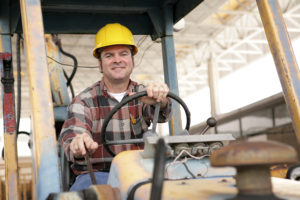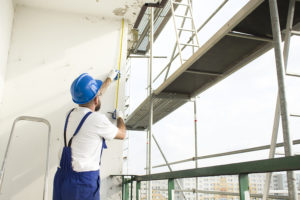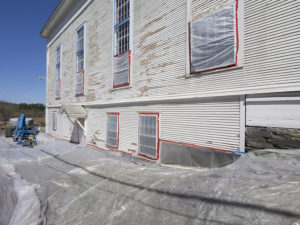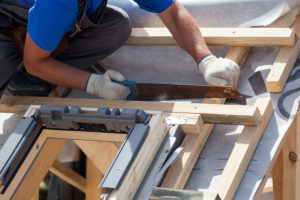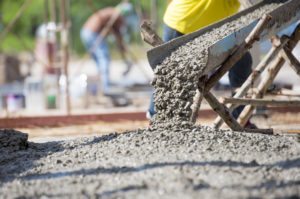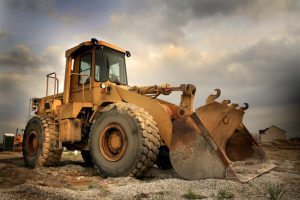by jeffp | Jul 12, 2017 | Construction

Equipment that runs on diesel is quite common in a number of industries. This includes construction sites, mining, farming, maritime and several other such sectors.
Workers in these areas are exposed to a great deal of carcinogen exhausts from such machinery. This is typically in the case where machines are not properly handled and maintained.
Emissions from such equipment are made of “Diesel Particulate Matter”. ,This is a substance that “is made of soot and is comprised majorly of metallic particles, ash, carbon, silicates and sulfates” according to OSHA.
The International Agency for Research on Cancer (IARC), classified exhausts from diesel machinery under “Well-known Hazards for the Human Health” in 2012.
Even temporary exposure to exhausts and emissions from diesel equipment can lead to issues. These include constant headaches, dizziness, and irritation in the eyes, nose & throat. Long-term exposure could cause the development of more serious issues. These include breathing conditions, cardiopulmonary and cardio conditions, and even lung cancer.
Given the health threat, managing the exposure to such emissions is highly necessary.
First, make sure there is adequate supervision in place to limit the exposure of any workers. OSHA further suggests that equipment receive regular maintenance. It also suggests aging equipment be swapped out for cleaner burning engines. These should be equipped with better air filtration systems.
Second, be sure adequate safety controls are in place. For example, creating “Off-limit” areas is a great way to limit the pool of people at risk for exposure. Likewise, limit the times when machines are running so the fewest workers are around when the machinery is operational.
Smart preventive measures like these can reduce the exposure to diesel exhausts to a great extent. Plus, they can be implemented in a way that still allows a team to work at maximum efficiency.
A side benefit: By limiting diesel exposure you can help reduce workmans’ comp claims. You’ll maximize worker availability. You’ll also have a positive impact on your overall operational costs.
by jeffp | Jul 5, 2017 | Construction

Structure scaffolding for work projects could provide many serious threats to employees. Inning accordance with OSHA, injuries connected to scaffolds include falls, tip-overs, being struck by falling tools, and entering contact with energized high-voltage line.
To ideal stay secure while building as well as using scaffolding, OSHA recommends a selection of tips:
Always utilize footings that are level, rigid as well as able to sustain lots without settling or moving.
Securely plumb and also support tools in order to help protect against persuading and dislodgment.
Plumb and also degree the scaffold as you go.
Make sure all connections as well as couplers are safely fastened before going on in the setting up process.
Constantly comply with the maker’s directions when installing ties as well as dental braces.
Avoid blending scaffolding parts from various makers unless you make certain you can do so safely.
Location toeboards on railroaded sides to help protect against objects from dropping.
When servicing a scaffold:
Have a qualified individual evaluate the scaffold before every shift.
Check to make certain it’s secure to use. If it is noted with red tags, it’s hazardous. Never make use of a hazardous scaffold till repair works are made.
Do not overload a scaffold beyond its maximum load ability. Never use buckets, obstructs or ladders in an effort to produce more functioning height on the platform.
Do not deal with a scaffold if it is snowy, icy or slippery.
by jeffp | Jun 6, 2017 | Construction
Due to its low cost and stability, lead was commonly used in construction and plumbing until the late 19th century.
As a result, this heavy metal is still found in buildings and construction sites, especially in demolition, salvage, renovation, and even cleaning. The dangers of lead exposure and poisoning are well known and it’s important to protect workers from lead exposure in construction.
There are numerous exposure methods for workers.
* Inhalation of lead fumes or dust is common.
* Lead may even be ingested if it’s present on a worker’s hands.
* The exposure may not even stay in the construction site as lead can dust can easily accumulate on skin, clothes, tools, and vehicles.
Although the dangers of lead are based on how much a person is exposed to at one time as well as the total amount of exposure over time, some people are at higher risk for complications than others. Anyone with asthma or respiratory diseases faces an increased risk of complications with exposure to lead
To limit and prevent exposure, OSHA recommends:
* Always use appropriate personal protective equipment (PPE) such as gloves and respirators
* Wash hands and face after work and before ingesting food or liquids
* Never eat in any area where PPE is required
* Clothing or uniforms that have been exposed to lead should never be taken home.
* Wash any exposed clothes or uniforms daily using approved cleaning methods
* Watch for any signs or symptoms of lead exposure which may include abdominal pain, migraines, and loss of sensation
* When working outside, stand away from any dust
* Always use ventilation for enclosed work areas
* Always use lead-free products and chemicals when able
* Use dust-collecting equipment to decrease dust exposure
* Whenever feasible, make use of lead-free products and chemicals.
If you’re concerned about lead exposure risk, use these tips to get started and contact us to get expert advice on minimizing exposure. We specialize in helping companies understand their risk and obtain appropriate coverages to mitigate that risk. If you have any insurance related questions please be sure to reach out
to us.
by jeffp | May 26, 2017 | Construction

Did you know that OSHA requires roofers and other construction workers to secure and protect skylights and open roofs? In spite of this construction sites continue to be plagued by fatal drops.
Often workers falsely believe that plastic dome covers offer adequate protection. But these are often not strong enough to carry weight and prevent falling through.
NIOSH (the National Institute for Occupational Safety and Health) offers the following advice for construction situation:
- Have adequate training in place to ensure workers understand the threats of resting on skylights. Be sure they are also aware of how deadly falls can be, even from heights that are perceived as “safe”.
- It is important that all roof openings and skylights are clearly delineated with barriers or warnings before work begins. This is especially true for roofing work but applies to any construction activity. These protections should remain in place throughout the project.
- Workers should be outfitted with safety harnesses to help protect workers from falls.
- Sometimes guardrails, safety harnesses, and other methods are impractical. In those cases, alternate forms of protection need to be leveraged such as safety netting.
- Skylights can be particularly dangerous. They should have warning labels affixed that caution against stepping on them.
It may seem silly or a waste of time to some to take these precautions. But, one worker death or serious injury can completely undo a construction project and an ill-prepared company.
Running a construction company can be a rewarding business. But, risk management is critical. Small investments in safety will protect against workers comp cost increases. In turn this helps to ensure maximized profitability.
Be sure to talk with your insurance professional for other risk management ideas that can help to improve the bottom line.
by jeffp | Apr 26, 2017 | Construction

As a contractor, concrete is one of those materials that is worked with pretty often. It’s easy to forget that you have to be careful when handling it.
After all, cement is considered one of the safest building materials. It’s found in playgrounds, sidewalks, workplaces, and homes…
But proper precautions have to be observed when working with concrete, otherwise it can be quite dangerous.
Concrete Basics
Portland cement is the most common active ingredient in concrete. Mixed with water, sand, and rock it solidifies into a rock-hard material. Thing is, because it is so abrasive, it is really harsh on the skin.
And even if concrete doesn’t come in contact with the skin directly, it can saturate clothing and still negatively impact the skin.
In fact, fresh concrete that comes in contact with skin can cause chemical burns. It can also cause severe damage to the eyes. How bad can the burns be? According to the Portland Cement Association, it can result in third-degree burns.
That’s the last thing you want your crew to face!
Remember, your Workman’s Comp rate is based on claim experience. Taking appropriate steps to ensure proper concrete handling will help you manage risks associated with handling cement…
- It’s important that anyone handling Portland cement wear water-proof gloves, shirts and pants that fully cover arms and legs, as well as rubber boots that are high enough to prevent concrete from getting in.
- It’s also important to wear eye protection to prevent concrete dust from getting into the eyes.
- Also, concrete is heavy. Workers need to take extra care when handling it. (Be sure they push with a shovel rather than lifting concrete with it.)
Following these simple guidelines will help ensure that your team is protected as they work with concrete. You’ll keep your workers safe and you’ll help control your insurance costs.
by jeffp | Mar 23, 2017 | Construction

Have heavy equipment on a job site? Make it a safe to operate…
Running heavy machinery on a construction site can lead to significant hazards. There are important techniques to bear in mind to keep a job site safe:
- Make sure that repairs to equipment are not started until the equipment is fully powered down.
- If refueling, you must be sure that engines are turned off.
- All vehicles should be checked at the beginning of each shift to verify its operability.
- If mobile heavy equipment is used on a public road, proper traffic management must be used.
- If traffic control methods such as barriers are unavailable, it is critical to leverage flaggers. Additionally, they must wear appropriate safety gear to manage traffic.
Construction vehicles on a job site should be equipped with:
- Fully operable brakes. (This includes having a working parking brake.)
- Working windshield wipers.
- Rollover protection.
- Appropriate seating.
- Lighting for operating at night.
- Backup alarms for vehicles where vision is limited when backing up.
- Exposed points on front-end loaders must be protected.
- Vehicles that are loaded by loaders, shovels, cranes, or similar equipment should have a cab that offers appropriate protection for operators.
- Controlling dust is paramount and operators in dusty environments need breathing protection.
- Loads on vehicles must be balanced and secured.

